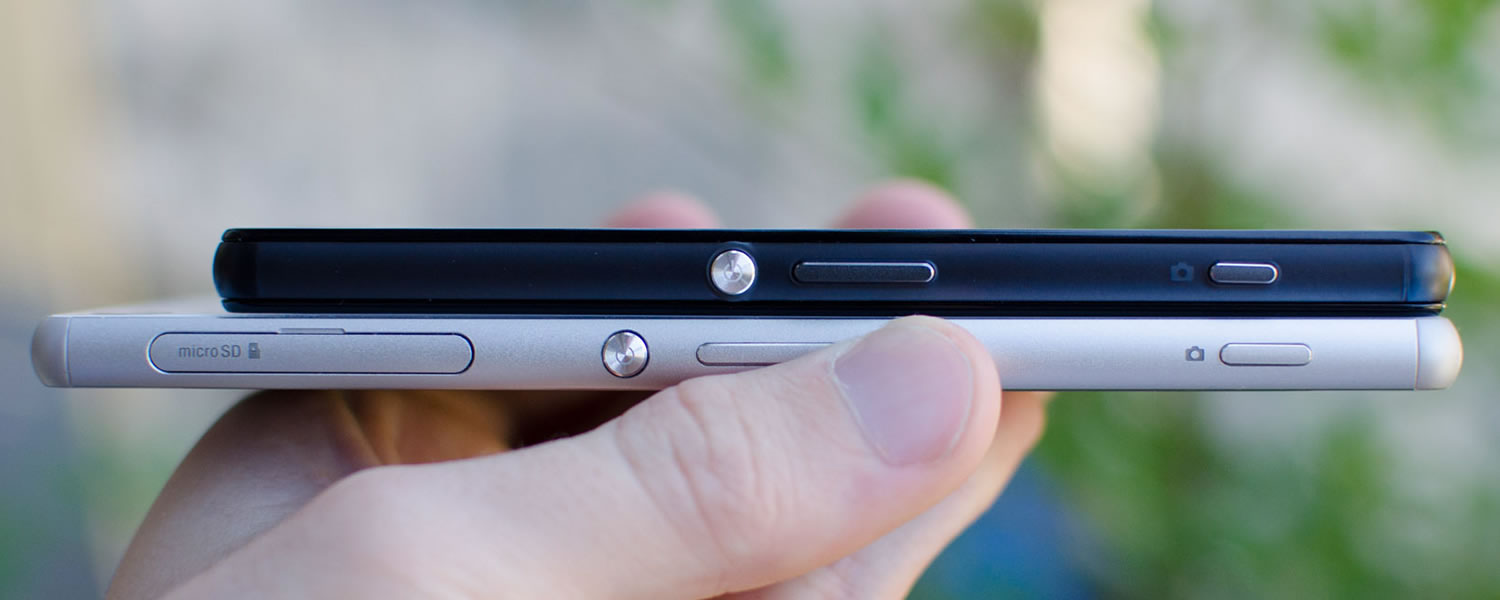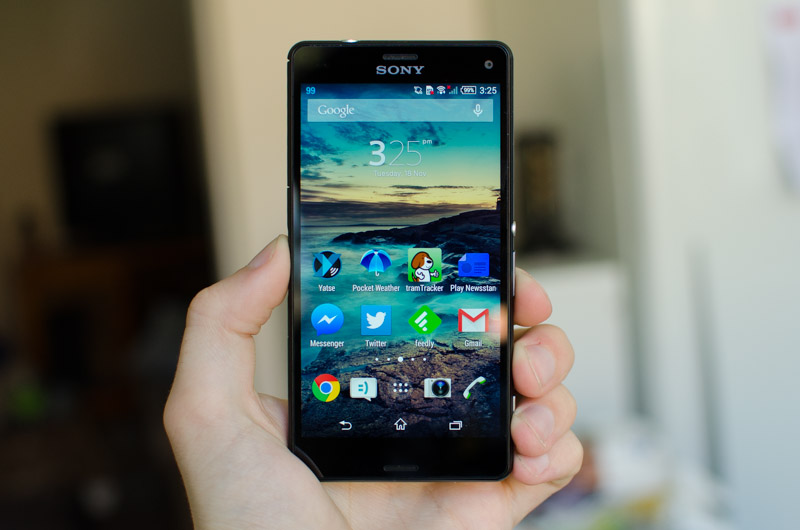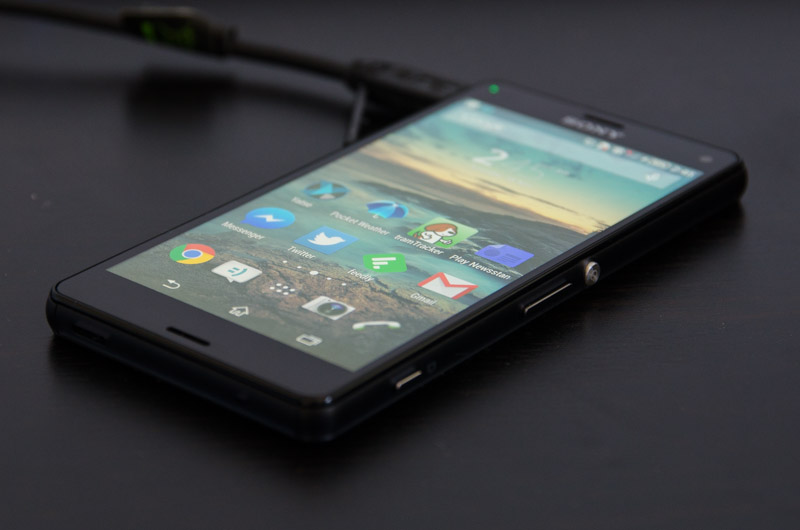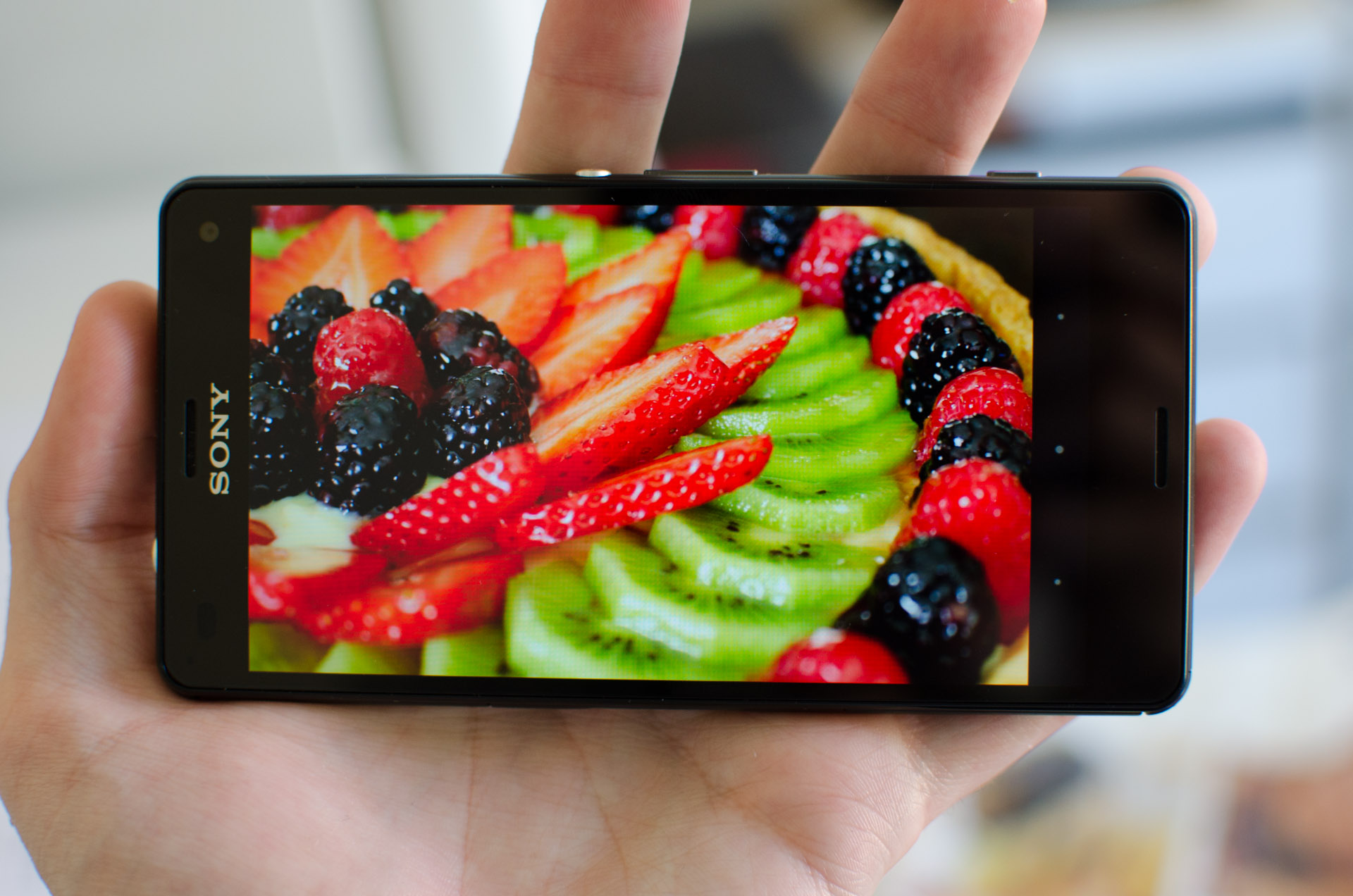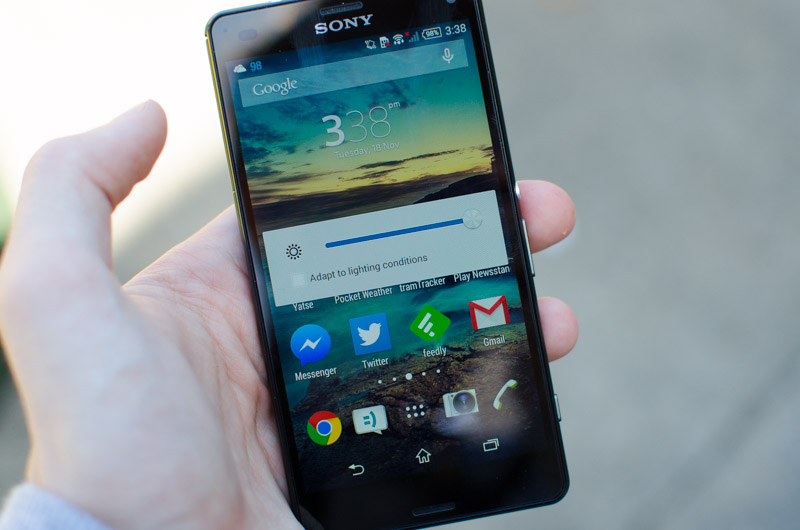Display
Due to the Xperia Z3 Compact's smaller frame, the display is completely different to that found on the Xperia Z3. It's a 4.6-inch IPS LCD panel with a resolution of 1280 x 720, providing 319 PPI, which is a downgrade in many aspects.
The size difference between the Compact and the regular Z3 (and other high-end smartphones for that matter), is not going to be a major concern for buyers. After all, you're in the market for a small handset and the 4.6-inch screen is easier to operate than its larger cousins. Do note that this devices makes use of on-screen navigation buttons, which can reduce the screen real estate available to you, depending on the application.
The resolution is a different story: there's no escaping the fact that by choosing a small device you're stuck with a pixel count and density lower than a full-sized flagship. While display manufacturers have been able to cram ridiculous resolutions with densities above 500 PPI into larger panels, there's not much love for sub-five-inch screens. This makes the 720p resolution of the Xperia Z3 Compact a little underwhelming.
With that said, 720p is perfectly adequate for a handset of this size. Sure, it doesn't have quite the same level of sharpness as the 5.2-inch 1080p display on the Xperia Z3 - and this is most notable when viewing thin fonts - but it's still reasonably pixel dense and great to view. Knowing no competitor beats the Z3 Compact in terms of resolution at this size is also a nice thing to have in the back of your mind; in other words, it's currently the best on the market.
The Z3 Compact's display is also the best on the market from several other perspectives. The fantastic color reproduction of the Xperia Z3 is back in the Compact, delivering balanced images that have just the right amount of saturation and vibrancy to look excellent. The slim display module makes content feel like it's right at your fingertips, while viewing angles are also great.
Sony continues to offer the X-Reality image post-processing engine in the handset's settings, and it's enabled by default. As I mentioned in my Xperia Z3 review, the engine can make images look better in some circumstances, but often it doesn't. It's also only active in the stock image/video viewing apps, rather than across the whole operating system like some display-altering features are. My personal preference is to keep the display looking realistic and accurate, and as the X-Reality engine can make images look worse, I'd recommend disabling it.
I'd also recommend disabling the super-vivid mode, which is a more intense version of the X-Reality engine that can really make images pop at the expense of extreme oversaturation. If you like that sort of effect (which reduces detail and accuracy), it's available to you, but it's not for me.
Brightness from the IPS LCD Is very good, at its maximum going quite bright and allowing you to easily view the display when outdoors. Automatic brightness is responsive, and the lowest brightness level is dim enough not to burn out your retinas when you use the Xperia Z3 Compact at night. Alongside the Xperia Z3, this handset is one of the few that I have no trouble reading both inside and outside.
All of the other display-related features from the Xperia Z3 have transitioned across, including the ability to adjust the white balance of the screen, glove mode for increased touchscreen sensitivity, and double-tap to wake.
